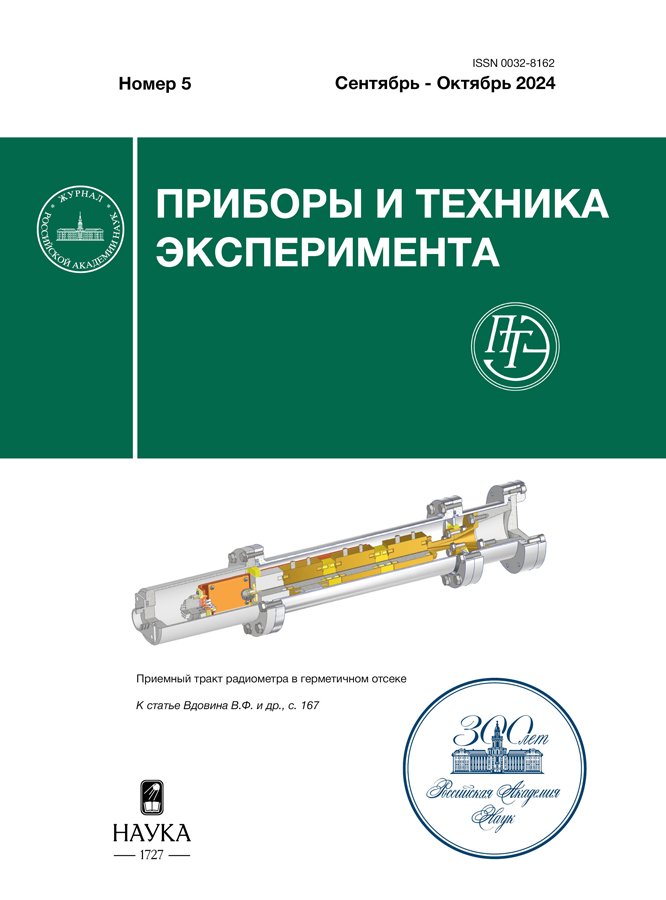Четырехфотонный джозефсоновский параметрический СВЧ-усилитель бегущей волны
- Авторлар: Ломоносов А.А.1, Кубраков Р.В.1, Филиппенко Л.В.1, Козулин Р.К.1, Крупенин В.А.2, Корнев В.К.2, Тарасов М.А.1
-
Мекемелер:
- Институт радиотехники и электроники им. В.А. Котельникова Российской академии наук
- Московский государственный университет им. М.В. Ломоносова
- Шығарылым: № 5 (2024)
- Беттер: 69-75
- Бөлім: ЭЛЕКТРОНИКА И РАДИОТЕХНИКА
- URL: https://freezetech.ru/0032-8162/article/view/682622
- DOI: https://doi.org/10.31857/S0032816224050075
- EDN: https://elibrary.ru/ETWTMZ
- ID: 682622
Дәйексөз келтіру
Аннотация
Джозефсоновские параметрические усилители бегущей волны могут обладать широким частотным диапазоном усиления, высокой чувствительностью и низким уровнем шума, что делает их перспективными для квантовых вычислений, систем считывания матричных приемников, спектроскопии, однофотонных детекторов и др. В данной работе исследованы образцы параметрических усилителей бегущей волны на основе трехслойной структуры Nb/AlOx/Nb типа сверхпроводник–изолятор–сверхпроводник (СИС) с единичной ячейкой типа SNAIL (Superconducting Nonlinear Asymmetric Inductive eLements) из кинетической индуктивности четырех СИС-переходов и нелинейной индуктивности меньшего СИС-перехода. Ячейки поочередно включены в противофазе по магнитному потоку, за счет внешнего магнитного поля может быть реализован отрицательный знак нелинейности Керра и уменьшение рассогласования по фазе для частоты накачки, частоты сигнала и зеркальной частоты. Измерены спектры пропускания образцов при температурах 4.2 К и 2.8 К в диапазоне частот 0.1–6 ГГц.
Толық мәтін
Авторлар туралы
А. Ломоносов
Институт радиотехники и электроники им. В.А. Котельникова Российской академии наук
Email: tarasov@hitech.cplire.ru
Ресей, 125009, Москва, Моховая, 11, с. 7
Р. Кубраков
Институт радиотехники и электроники им. В.А. Котельникова Российской академии наук
Email: tarasov@hitech.cplire.ru
Ресей, 125009, Москва, Моховая, 11, с. 7
Л. Филиппенко
Институт радиотехники и электроники им. В.А. Котельникова Российской академии наук
Email: tarasov@hitech.cplire.ru
Ресей, 125009, Москва, Моховая, 11, с. 7
Р. Козулин
Институт радиотехники и электроники им. В.А. Котельникова Российской академии наук
Email: tarasov@hitech.cplire.ru
Ресей, 125009, Москва, Моховая, 11, с. 7
В. Крупенин
Московский государственный университет им. М.В. Ломоносова
Email: tarasov@hitech.cplire.ru
Ресей, 119991, Москва, Ленинские горы, 1
В. Корнев
Московский государственный университет им. М.В. Ломоносова
Email: tarasov@hitech.cplire.ru
Ресей, 119991, Москва, Ленинские горы, 1
М. Тарасов
Институт радиотехники и электроники им. В.А. Котельникова Российской академии наук
Хат алмасуға жауапты Автор.
Email: tarasov@hitech.cplire.ru
Ресей, 125009, Москва, Моховая, 11, с. 7
Әдебиет тізімі
- Cullen A. L. //P roceedings of the IEE-Part B: Electronic and Communication Engineering. 1960. V. 107. № 32. P. 101. https://doi.org/10.1049/pi-b-2.1960.0085
- Nikolaeva A.N. , Kornev V.K. , Kolotinsiy N.V. // MDPI Appl. Sci. 2023. V. 13. P. 8236. https://doi.org/10.3390/app13148236
- Bell M.T. , Samolov A. // Phys. Rev. Appl. 2015. V. 4. P. 024014. https://doi.org/10.1103/PhysRevApplied.4.024014
- Randavie A. , Esposito M. , Planat L. , Bonet E. , Naud C., Buisson O., Guichard W., Roch N. // Nature Communications. 2022. V. 13. P. 737. https://doi.org/10.1038/s41467-022-29375-5
- Тарасов М., Гунбина А., Лемзяков С., Нагирная Д., Фоминский М., Чекушкин А., Кошелец В., Голдобин Э. // Физика твердого тела. 2021. Т. 63. № 9. С. 1223.
Қосымша файлдар




















